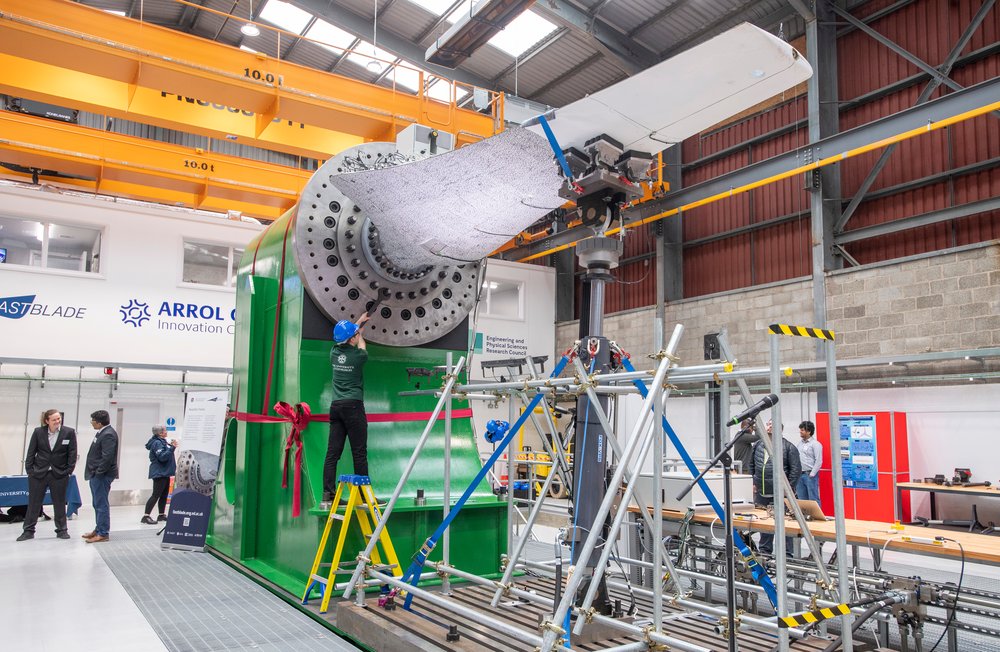
A first of its kind facility in Fife has produced ‘state-of-the-art’ tidal turbine blades using fewer materials than usual and at a reduced cost.
Design engineers from the University of Edinburgh created the tidal turbine blades at FastBlade in Rosyth, which is the world’s first rapid testing facility for tidal turbine blades.
The engineers were able to bring down the weight, volume, and cost of manufacturing the blades. The four blades are being utilised at QED Naval’s Subhub tidal platform, which is currently undergoing sea trials at Langstone Harbour.
FastBlade leader Dr Eddie McCarthy, of the University of Edinburgh’s School of Engineering, said, “This project represents a major step change in our group’s capacity to manufacture tidal blades at reasonable size scale (around three metres long) at a reasonable speed – we began the project in October 2022.
“We have found a faster, cheaper route to manufacture than the usual tidal blade fabrication process, based on an altered design – we hope the combination of improved design and optimized manufacturing process will contribute to reducing the levelized cost of energy (LCOE) of tidal stream energy, with the long term goal of matching LCOE of offshore wind.”
The University of Edinburgh explained that, currently, the UK contract price for tidal stream energy is around £178 per MWh, compared to £65 for offshore wind, and the high generation cost is a barrier to the development of tidal energy – potentially the missing piece of a year-round, renewable energy grid.
Lead design engineer, professor Dilum Fernando, added, “This is the first time this type of structure has been used in blade manufacturing. Its monolithic structure eliminates the weaker adhesive joints found in conventional rotor blades, which will make it more resilient to tidal stream conditions.”
Jeremy Smith, MD of QED Naval, commented, “We are delighted to be working with the University of Edinburgh on this next generation of tidal turbine blades, which will help bring down the cost of tidal installations. We have deliberately demonstrated the design tools, processes and build method on our smaller T1 blade design, using a 6.3m rotor diameter, but we will be pulling these through into our T3 blades up to 14m rotor diameter. This work, and its part in the EU Interreg TIGER Project helps showcase cost savings and the benefits of tidal energy.”







